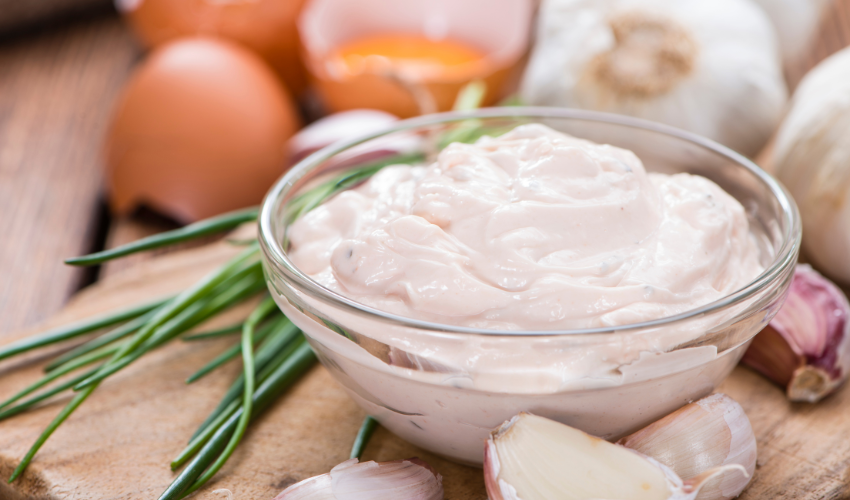Aioli with mayonnaise are two popular condiments that often get mixed up due to their similar appearance and flavor profiles. While both are creamy and tangy, there are several key differences between the two that set them apart. In this article, we will explore the history, ingredients, and taste profiles of aioli and mayonnaise to help you better understand the difference between these two beloved sauces.
What’s the difference between aioli and mayonnaise?
- Ingredients: One of the most significant differences is their ingredients. While mayonnaise is traditionally made with egg yolks, oil, vinegar or lemon juice, and mustard, aioli is made with garlic, olive oil, and egg yolks.
- Texture: Another difference between the two condiments is their texture. Aioli is thicker and creamier than mayonnaise and has a more distinct garlic flavor. Mayonnaise, on the other hand, is smoother and tangier, with a more neutral flavor profile.
- Origin: Mayonnaise originated in France in the 18th century and quickly became popular throughout Europe and the United States. Aioli, on the other hand, originated in the Mediterranean region, specifically in Provence, France, and Catalonia, Spain.
- Uses: While both aioli or mayonnaise can be used as a condiment or a sauce, they are typically used in different ways. Aioli is often used in Mediterranean cuisine and pairs well with seafood, roasted vegetables, and grilled meats. Mayonnaise, on the other hand, is more versatile and can be used in sandwiches, salads, and as a dip for fries or vegetables.

FAQs:
Is aioli healthier than mayonnaise?
It depends on the ingredients used to make both condiments. Aioli typically has fewer preservatives and additives than mayonnaise, but it is also higher in fat due to the use of olive oil.
Can I substitute mayonnaise for aioli in a recipe?
While mayonnaise and aioli have similar flavors, they are not interchangeable in all recipes. If a recipe specifically calls for aioli, it is best to use aioli, as the flavors and texture of the dish may be affected by the substitution.
Can I make aioli without garlic?
While garlic is a traditional ingredient in aioli, you can make a garlic-free version by substituting other flavorful ingredients like roasted red peppers, basil, or sun-dried tomatoes.
Can aioli be frozen?
Aioli can be frozen, but their texture may change once thawed. It is best to use frozen aioli or mayonnaise as a base for sauces or dressings rather than as a spread.
Is store-bought aioli the same as homemade aioli?
Store-bought aioli may contain preservatives or additives that homemade aioli does not. Additionally, store-bought aioli may have a milder garlic flavor and a thinner texture than homemade aioli.

Conclusion
While these sauces are both creamy condiments with tangy flavors, they are not the same thing. Aioli is traditionally made with garlic, olive oil, and egg yolks and has a thicker, creamier texture than mayo. Mayonnaise, on the other hand, is traditionally made with egg yolks, oil, vinegar or lemon juice, and mustard, and has a smoother, tangier texture.
Knowing the difference between these two condiments can help you choose the right one for your dish, whether you’re making a Mediterranean-style dish with aioli or using mayo as a sandwich spread or salad dressing. So the next time you’re in the condiment aisle at the grocery store, you can confidently choose between aioli and mayonnaise, knowing the unique qualities that make each one stand out.






















